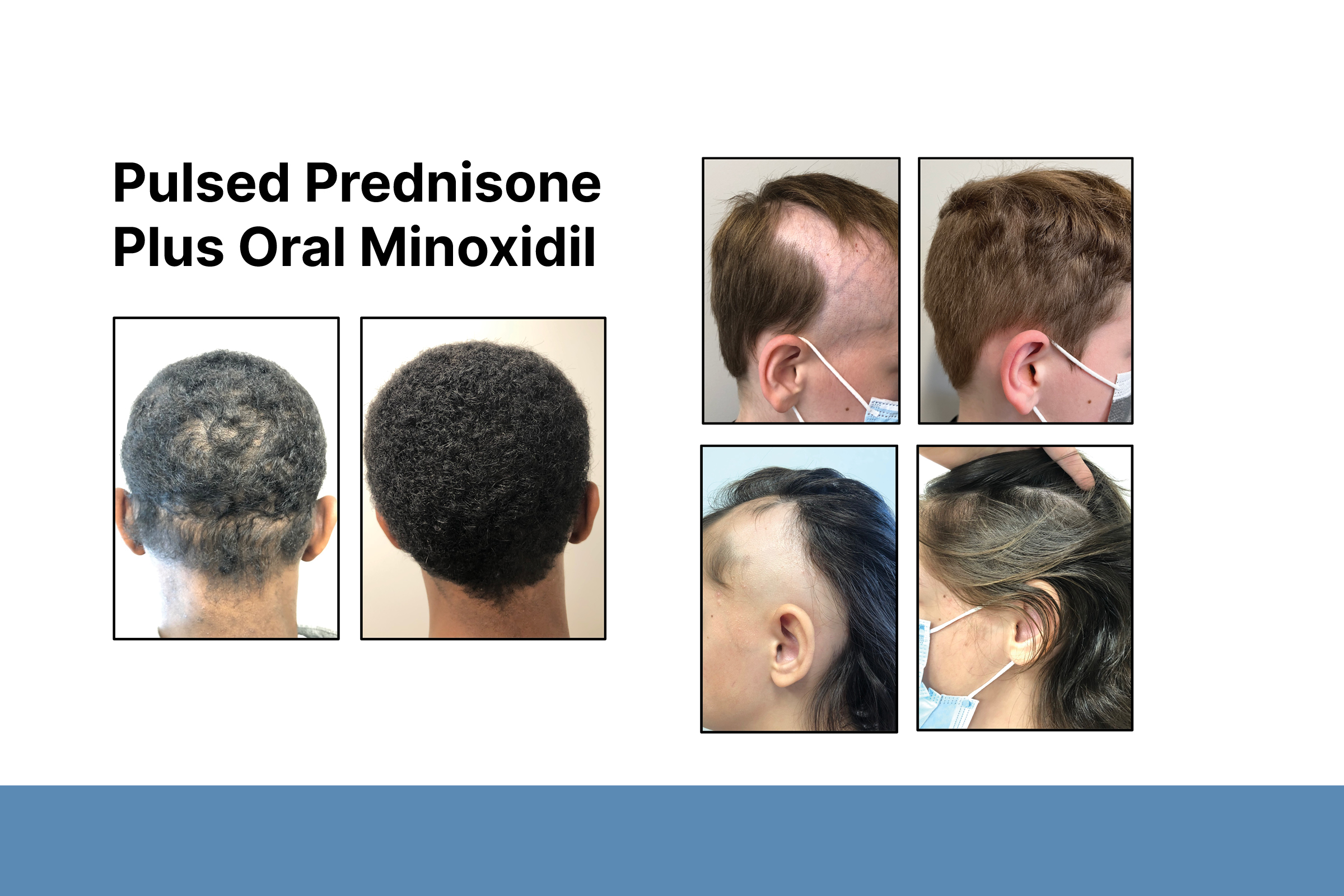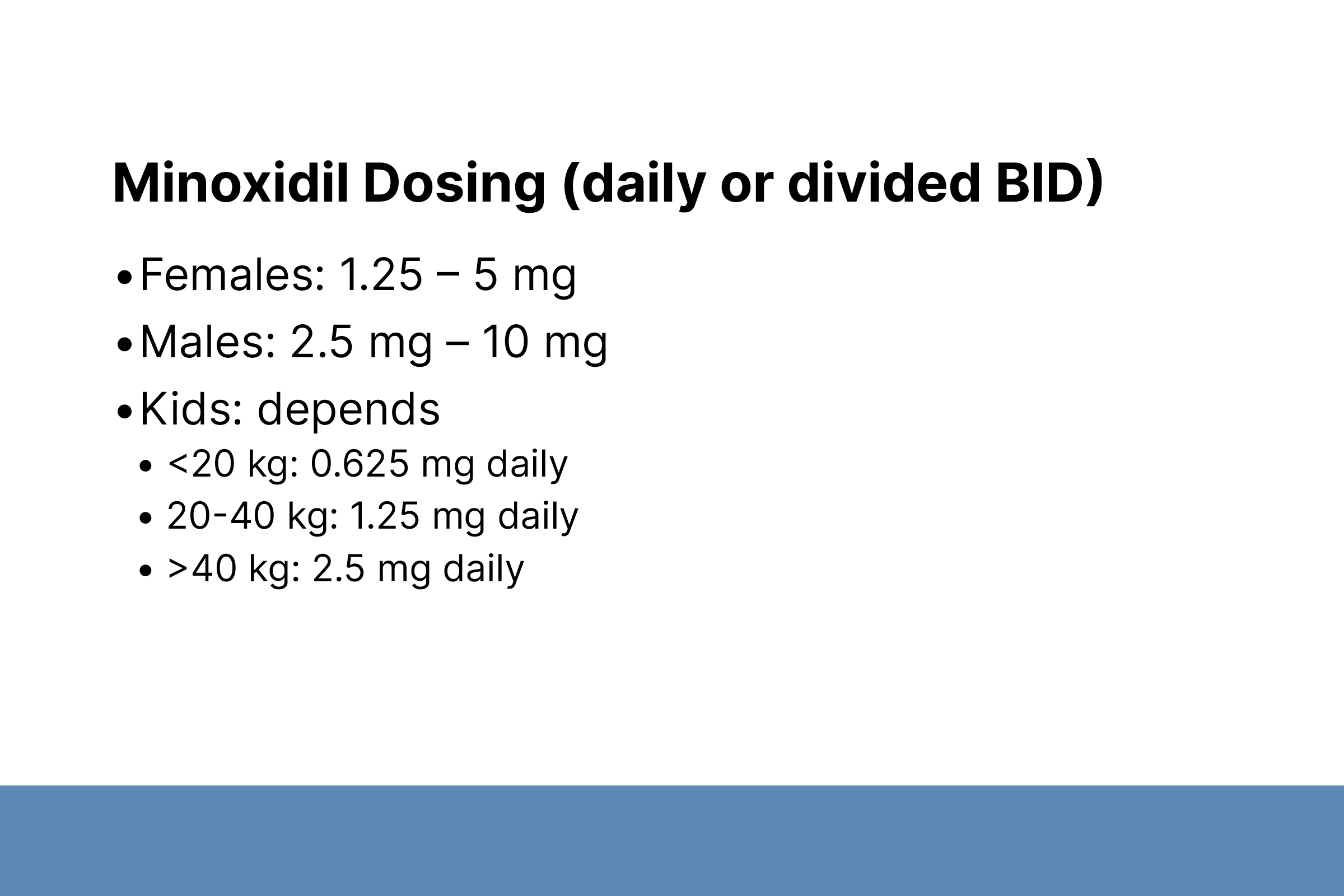Oral Minoxidil for Hair Loss
Brittany G. Craiglow, MD
Associate Professor Adjunct, Dermatology, Yale School of Medicine
December 2023
Dr. Craiglow presented about the use of oral minoxidil for hair loss disorders.
First, Dr. Craiglow described the history of oral minoxidil treatment. Oral minoxidil was first used in patients with severe refractory hypertension, and hair growth was reported as a side effect. The exact mechanisms of oral minoxidil are unclear. It functions as a vasodilator and potassium channel opener, shortens the telogen phase and lengthens the anagen phase leading to increased hair growth and caliber, and has potential immunomodulatory effects.
Second, Dr. Craiglow discussed the risks and benefits of oral minoxidil therapy. Advantages include increased convenience and compliance, lower cost, and its potential as a co-therapy with other treatments. Reported side effects for hypertension include edema, tachycardia, nausea, headache, Stevens-Johnson syndrome/toxic epidermal necrolysis, pericarditis, pericardial effusion, and cardiac tamponade. However, Dr. Craiglow emphasized that the dose of oral minoxidil for hypertension (10–40 mg/day) is much higher than that for hair loss (1.25–10 mg/day). Severe side effects have primarily occurred in patients with other risk factors such as systemic lupus. Oral minoxidil has minimal effects on blood pressure in patients who are normotensive. A 2022 report described peripheral edema and small pleural and pericardial effusions in a patient taking 0.25 mg oral minoxidil and 5% topical minoxidil. However, additional studies have shown oral minoxidil has a good safety profile at doses prescribed for hair loss. Two case reports of accidental oral minoxidil overexposure in children reported minimal side effects.
Third, Dr. Craiglow described conditions she treats with oral minoxidil, including androgenetic alopecia (AGA) and alopecia areata (AA). She emphasized that teenagers also get AGA, and early treatment can lead to improved outcomes. For AA, oral minoxidil can be used in combination with other treatments, including topicals, intralesional triamcinolone, and JAK inhibitors. Dr. Craiglow uses oral minoxidil for other hair loss conditions such as chronic telogen effluvium, cicatricial alopecia, hair shaft disorders, and traction alopecia.
Finally, Dr. Craiglow shared her approach to discussing treatment risks and benefits with patients. She discusses all possible side effects, from mild to severe. For older patients with cardiovascular comorbidities, she recommends getting approval from their cardiologists. For AGA, it is important to counsel patients that the goal of treatment is stabilization, which may take time. She emphasized that many people do see improvement with oral minoxidil. It is important to take good quality photographs in order to accurately assess progress.



